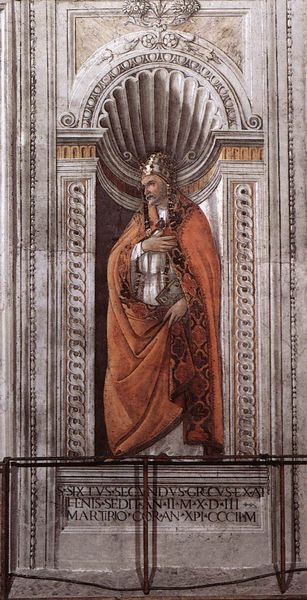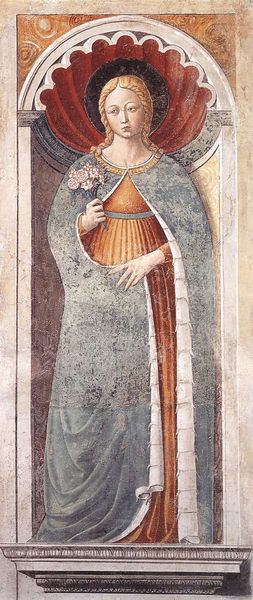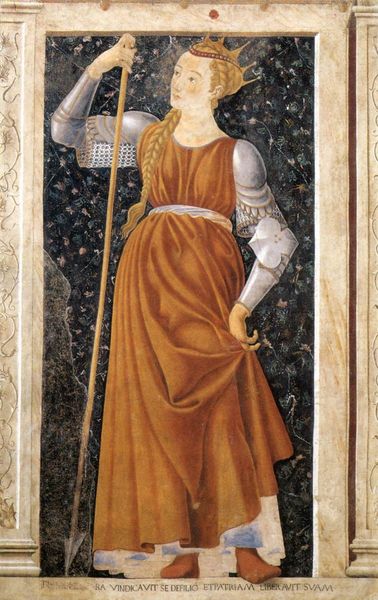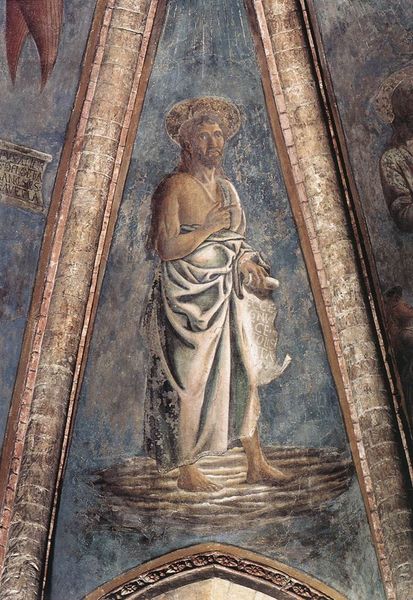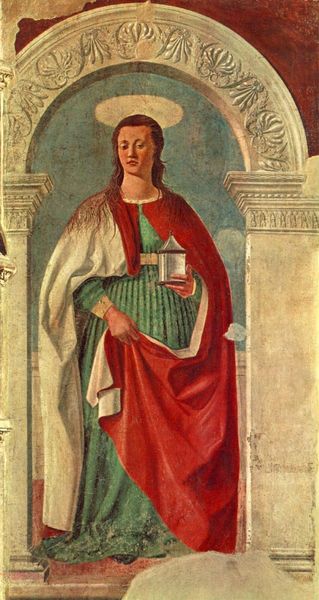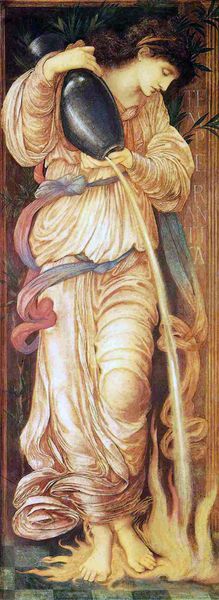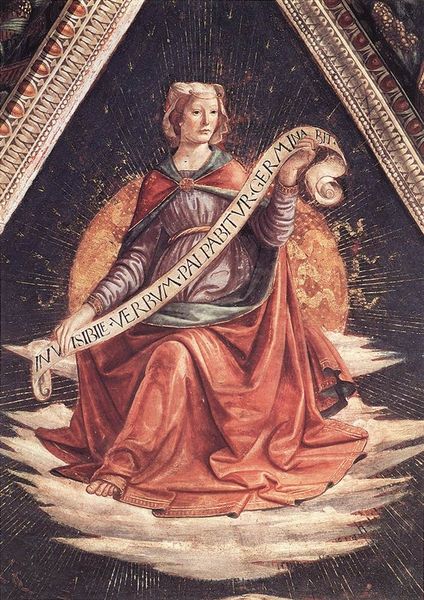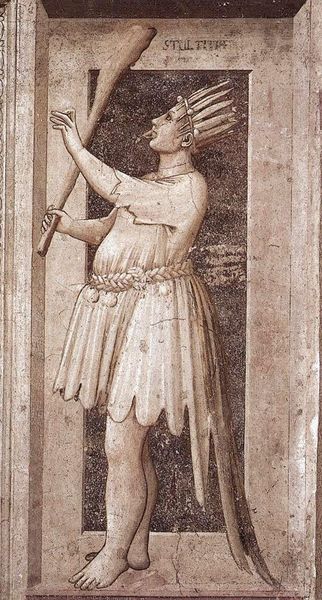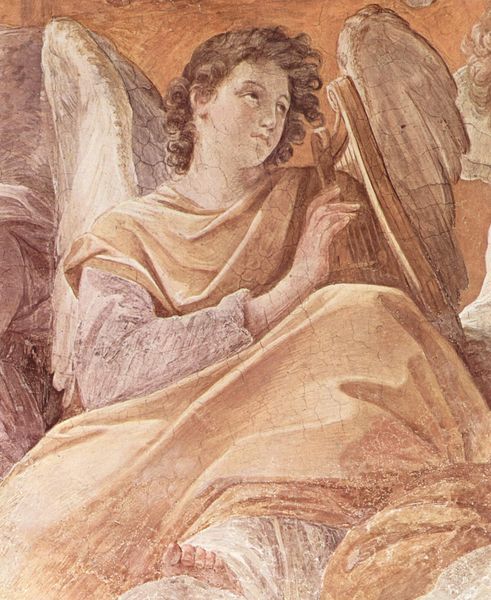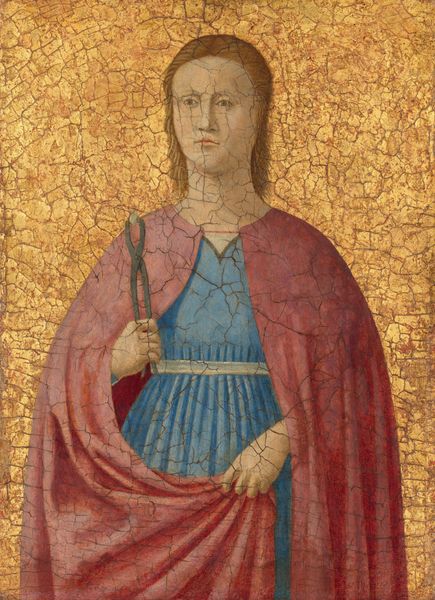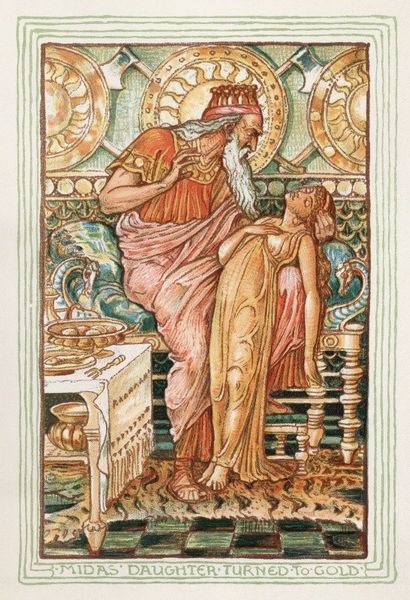
fresco
#
figuration
#
fresco
#
christianity
#
history-painting
#
italian-renaissance
Copyright: Public domain
Editor: So this is Ghirlandaio's "St. Barbara," a fresco from 1471. I’m really struck by the way the colors pop, even for a fresco that's so old. I'm curious, what do you focus on when you look at this work? Curator: As a materialist, I find myself drawn to the act of its making, considering the significance of a fresco created during the Italian Renaissance. What does it mean to choose fresco – painting directly onto wet plaster – versus a portable panel painting? Editor: Hmm, good question. Does the choice of fresco say something about the intended audience or the social purpose of the work? Curator: Precisely! Frescoes were typically commissioned for public or semi-public spaces, like churches or palace walls. They are also far more permanent – which might connect to the value of such an iconographic figure for cultural dissemination. Can we consider that this image was produced by artisans, applying pigment carefully selected and sourced in a period of emerging capitalism and commerce? Editor: That's fascinating, thinking about the procurement of materials...and labor! Does that level of permanence affect the perception and interpretation of the depicted narrative of the saint's legend? Curator: Yes, certainly, we could look at this image and think about what the artist, the artisans, and the commissioner wished for its consumers. How do the raw materials of powdered pigment and plaster become a carefully wrought scene with a moral directive? How did the artist and workshop use materials, tools and assistants to propagate cultural norms? Editor: So, considering materials shifts our understanding from just religious iconography to the practical economics and social structure surrounding artistic production. Thanks! I will need to rethink my approach from now on. Curator: Indeed, considering art from the standpoint of materials connects art-making directly to labor and economy. An essential part of understanding artistic endeavors.
Comments
No comments
Be the first to comment and join the conversation on the ultimate creative platform.
